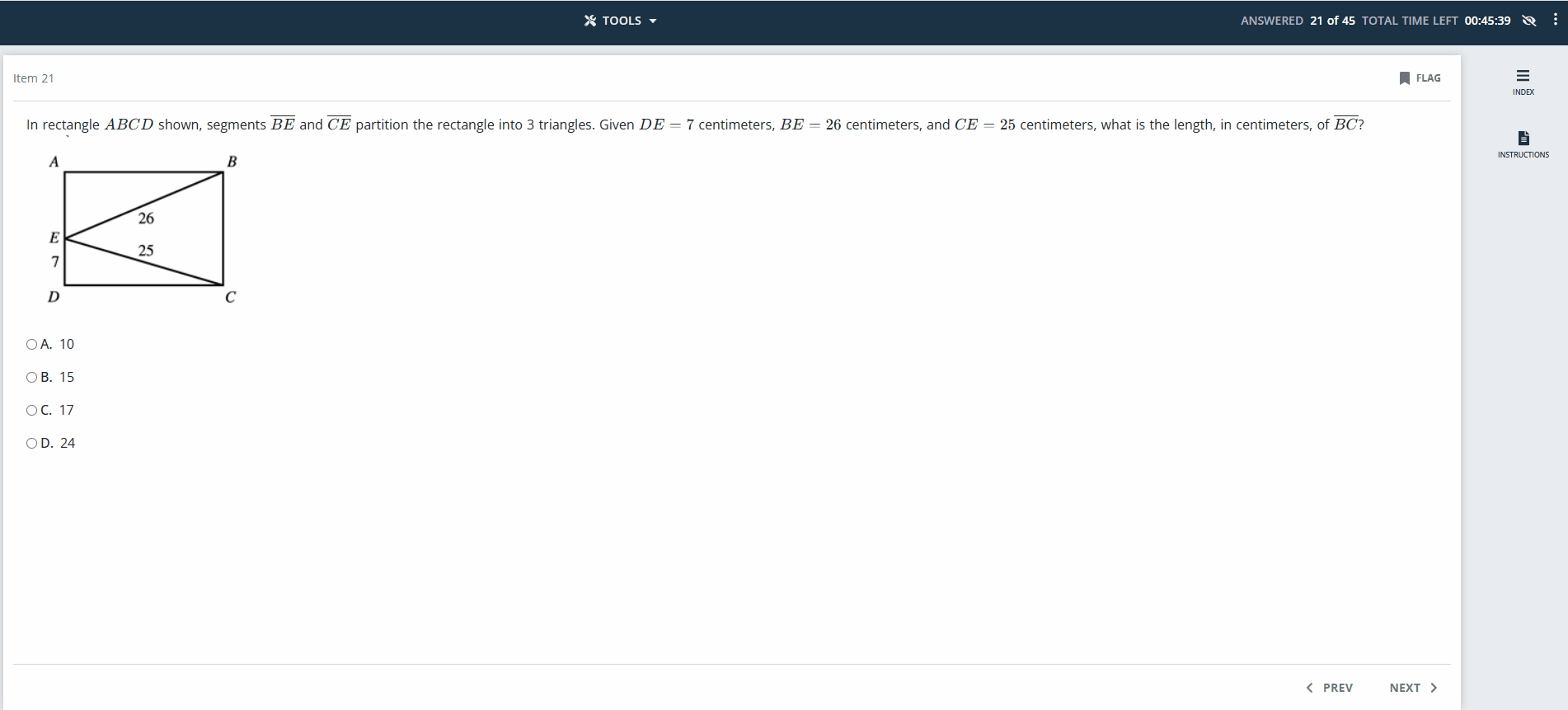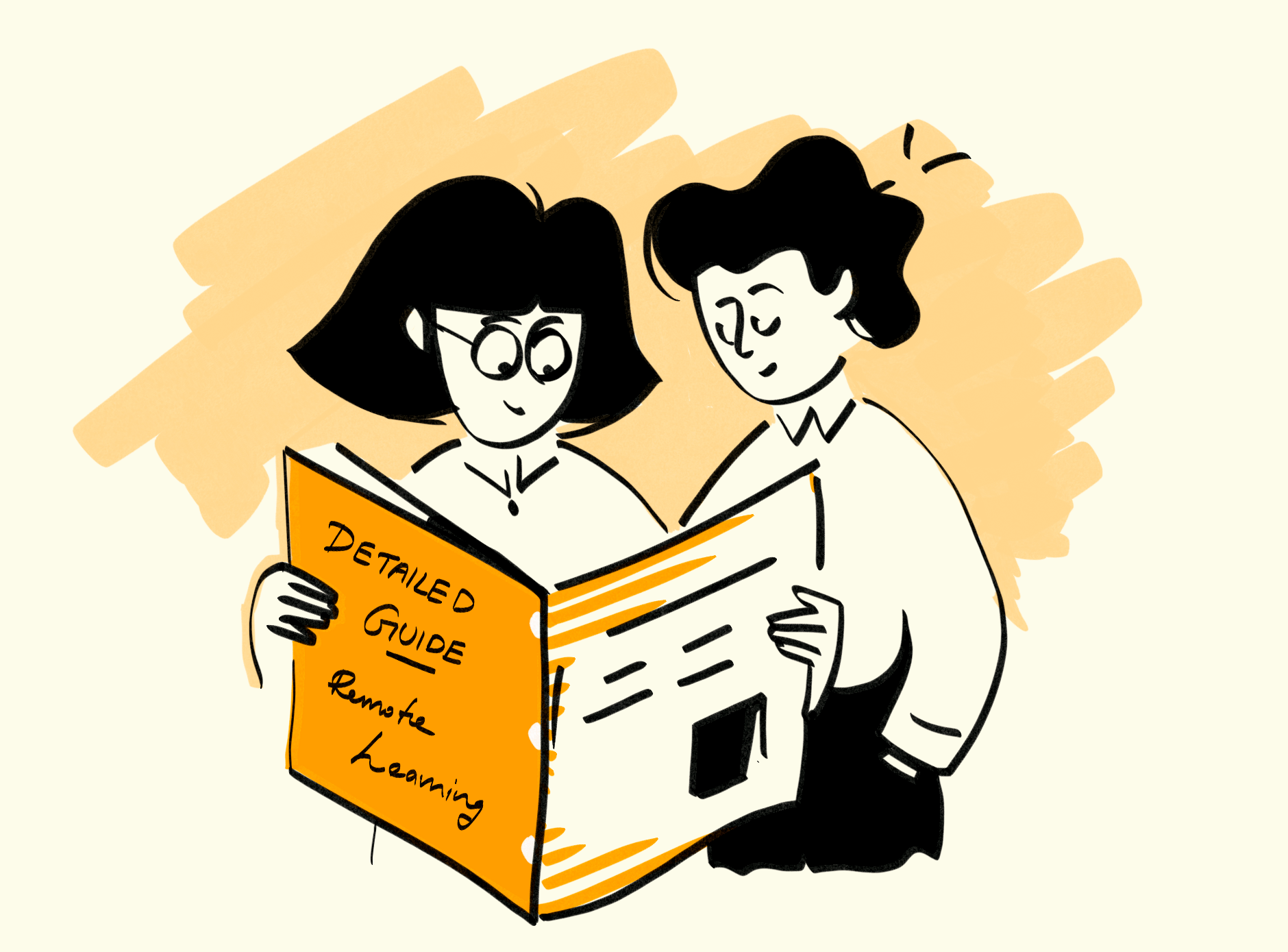




Key Takeaways
The digital ACT is the computer-based version of the traditional paper ACT exam. Instead of bubbling answers on a paper sheet, students can take the test on a computer at an authorized testing center. The digital format of ACT has been available in the US since 2016 and internationally since 2018 on a selective basis.
Only the mode of examination is online with minor changes. Content-wise, it covers the same core subjects such as English, Math, Reading, and Science, and offers an optional Writing (essay) section.
Since the first ACT online national test was conducted in December 2023, test-takers have been both excited and nervous. We can understand, because we saw something similar when we wrote about preparing for the digital SAT.
In this blog, we analyze the format of the ACT in its digital format in a detailed way so that test-takers can make a more informed decision on whether to opt for the traditional format or to embrace online testing.
Digital ACT Format with Timings
The Digital ACT basics
Firstly, the digital ACT is being offered alongside the pencil and paper testing format. The new testing format isn’t fully replacing the traditional format - at least, not yet.
Secondly, you’ll see one question at a time on your screen. Below the questions, you’ll see the answer choices. Somewhere on the top, there will be a menu that includes tools that you can use (more about the tools in a bit).

And finally, the digital ACT is not an adaptive test. This is in contrast with the digital SAT, which is a multi-stage adaptive test and requires different test-taking strategies.
What’s staying the same with the online ACT
To begin with, three testing sections haven’t changed: English, Math and Reading (The Science section is now made optional). Also, the Writing (AKA Essay) section continues to be offered as an optional area.
Next, the score range is still the same. Each of the four sections is scored between 1 and 36. Your composite score will be the simple average of your sectional scores, and that too will range between 1 and 36.
Finally, sectional time limits still continue, although with some changes. The English section will be allowed 35 minutes; Mathematics 50 minutes, and Reading 40 minutes.
So how’s the digital ACT different?
We'll discuss how the digital ACT has changed in two parts. First, we'll talk about the structural changes in the test. After that, we'll look at the features that have been added - made possible only because of the digital nature of the ACT.
Structural changes in the digital ACT
Test-takers will see four major structural changes.
1. Number of questions
The number of questions have been reduced. Now, there are 131 questions in the compulsory sections. Overall, there will be 44 fewer questions than before.
2. Time per question
While both the testing and the number of questions have been reduced, the time you get per question has actually increased. In Mathematics, for instance, the older ACT gave you 60 minutes for 60 questions. That came to exactly 1 minute per question.
The new ACT online will allow 50 minutes for 45 questions. That’s slightly more than 1 minute 6 seconds per question.
3. Number of choices in the Mathematics section
The older ACT showed you five choices for every question in the Mathematics section. Now you’ll see four choices.
4. Three compulsory sections instead of four
Till now, the Science section in the ACT was compulsory, so there used to be 4 compulsory sections. Starting April 2025, the Science section will be optional, so the total number of compulsory sections drop to three.
New features on the ACT online
There are some differences between the online ACT and the traditional version that you’ll experience without being aware of them. For instance, the look and feel of the traditional test booklet gives you a unique tactile experience, whereas the digital ACT is entirely technology-driven.
Among the various differences, the availability of on-screen features is perhaps the most noticeable. Because the digital ACT has a digital interface, you get several on-screen tools. They not only change your test-taking experience but also impact your ACT test prep.
Let’s look at these tools and features first.

Instructions
At the start of the segment, you'll see the instructions. You can go back to this tab anytime if you want.

It's best, however, to memorise the instructions during your test prep. That way, you'll save time and also feel more confident on the test day.
Navigation
Two buttons ‘Previous’ and ‘Next’ take you to the preceding and following question respectively. For instance, to move to the subsequent question, select Next. To record your answer, click on the radio button adjacent to the choice.
Besides, there’s a row of numbers at the bottom; hitting a number will enable you to jump to that particular question from anywhere.

Flag a question
Not sure about attempting a question and want to return to it later? In the traditional paper and pencil, you’d mark the question. But returning to it wasn’t always easy, because you’d have to hunt through all the pages of the test booklet to find the questions you had marked.
The online ACT makes this very easy. Just click on the questions you’d like to flag. All through the test, those flag icons will let you easily spot the questions you have flagged.

Answer eliminator
Often, you want to choose the best answer through the process of elimination. You know for sure that a particular answer choice is wrong and you’d like to just ignore it.

From the drop-down menu, choose ‘Answer eliminator’. You’ll see a cross mark [x] against every choice. Just click on the choices you’d like to eliminate - and voila! The choice would be crossed out.
Answer masking
Sometimes crossing out a choice still isn’t enough - you want them completely out of sight. You can’t do it in the paper and pencil test. However, if you take the digital version you can easily do it.

From the menu, select ‘Answer Masking’. Then simply click on the choice you want to hide. The test will immediately mask the ones you selected. That way, you can concentrate on the choices you think are correct, without the visual interference of the incorrect choices.
Line reader
Based on the feedback from our students, we have come to believe that you’ll find this feature most useful in the segments that test your language skills (English and Reading).
Some questions require you to explore the key aspects of the entire passage. Other questions only focus on a few lines out of the long passage. That’s where the Line Reader tool becomes very useful.

After you select the tool, just move the mouse over the lines you want to focus on. The tool will mask the rest of the text and display only the part you want. You can also drag the edges to enlarge, shorten, or simply change the part you’re focusing on.
Magnifier
As the name suggests, this tool magnifies a part of the text or image. This is a movable window and you can adjust it the way you want. This tool shows how the online ACT is working hard to bring accessibility to everyone.

Highlighter
Is there a part of the text you believe needs greater attention? Use the highlighter tool to highlight whatever part of the text you feel like. Features such as this one make mastering the digital format of the ACT easier.

The Digital ACT or the paper version?
Technology has helped organizations conduct standardized tests more equitably across a wide audience. Digital versions of the test benefit students preparing to take college admission tests in several ways.
Though nearly everyone reading this has at least some level of exposure to digital screens, some of us are more attuned to digital learning and tests than others. So we won’t generalize our recommendation in favor of one version over the other.
That said, we’re confident that by now you are convinced that the ACT Corporation, the body that administers the ACT, has thought through everything. Virtually all the convenience you had with a test booklet - jumping to any question, for instance - has been incorporated in the digital ACT. Additional features like the Magnifier only make things easier for the test-taker.
However, it’s important that you make your decision early on. That’s because the format you choose will impact your test prep journey and shape your test-taking strategies. Your ACT, a crucial component of your college admission prospects, needs careful consideration. (PS: You might also like our blog comparing the SAT and the ACT).
How to practice the Digital ACT before the real exam
While the internet has opened your doors to almost limitless resources, not all of them are of equal merit. It’d be unfortunate if you choose a particular resource, spend all your time working with it, and end up at the test center only to learn the real exam is way too different.
Here are the three things you should look for in a digital ACT test prep and practice resource:
- Quality of questions: The questions you practice on should accurately reflect the actual ACT questions.
- Technology solution: The platform should be robust and user-friendly, and should be faithful to the actual test scenario.
- Experience with tests: Make sure you opt for a solution with strong experience in SAT and ACT preparation.
Only Edison checks all the above three boxes. But don’t take our word for it; request a demo and see how this one choice can positively transform your test-prep journey.
Conclusion: Over to you
Congratulations on taking the first and the most important step in your ACT prep journey, namely, understanding the test details! As one of the most important tests you’ll ever take, the ACT, whether online or conventional, will need a good deal of planning and preparation from your end.
Whether you’re just starting your ACT preparations or looking for some practice tests, accurate information is what you need. Now that you have a clear idea of the digital ACT, you are ready for the next step: begin exploring our free resources.
Frequently asked questions
The ACT exam can be taken both online and offline, in paper-based mode. Here, the Digital ACT is the computer-based version of the traditional ACT test. Instead of filling out answers on a paper booklet and bubble sheet, students can directly take the test on a computer at an authorized testing center. The content and structure of the exam stay the same as the paper test, and only the timing and the delivery mode change. Students read the question and answer directly on screen with built-in tools needed for the test.
Students taking the Digital ACT get a total of 2 hours and 05 minutes to finish the exam, and this excludes breaks. Plus, each of the two optional sections, Science and Essay, is timed at 40 minutes per section. The paper ACT without the optional writing section lasts for about 2 hours and 55 minutes.
As of 2025, the Digital ACT includes four core sections: English: 50 questions Math: 45 questions Reading: 36 questions Science: 40 questions (optional) In total, the compulsory sections have 131 scored questions, and that's a reduction from the previous 215-question format.
The answer is no. Unlike the Digital SAT, which uses a multistage adaptive format, the Digital ACT is not adaptive. All students get the same set of questions in the same order, and the difficulty doesn't change based on their answers.
While the digital ACT comes with an in-built calculator within the testing platform, students are still allowed to bring their own calculators. But some models are prohibited, including calculators with model numbers starting with TI-89, TI-92, HP 40G, HP 48GII, HP 49G, HP 50G, HP Prime, Casio fx-CP400, ClassPad 300, ClassPad 330, Algebra fx 2.0, and any model numbers starting with CFX-9970G. Plus, you will also be given scratch paper to use during the Math section.
Yes, Digital ACT scores are equivalent to paper ACT scores. Both are scored on the same scale (1–36 composite score), and colleges treat them the same way in admissions. The only difference here is that the Digital ACT is timing and delivery, but the scoring system remains identical.

Tutors Edge by EdisonOS
in our newsletter, curated to help tutors stay ahead!
Tutors Edge by EdisonOS
Get Exclusive test insights and updates in our newsletter, curated to help tutors stay ahead!
Recommended Reads
Recommended Podcasts






.png)




.png)
.webp)
